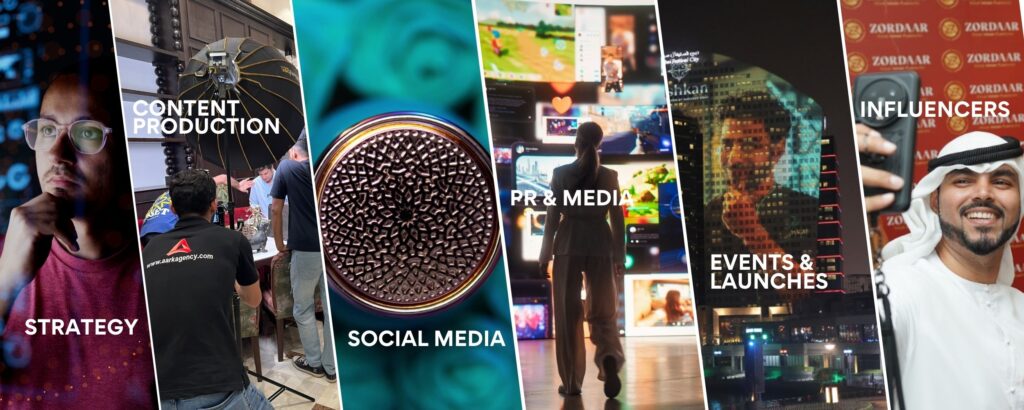The advertising landscape has transformed significantly since the glaringly inefficient ‘publish and pray’ approach back in the day – presenting ads to random audiences to see if anything would stick. The need for personalization was obvious.

In image above: Terry Kane, Managing Director across MEA at The Trade Desk
Today, digital technology has made personalization not just a possibility, but an expectation from viewers and advertisers alike. Viewers appreciate ads that are relevant to their interests, and advertisers value the increased efficiency of campaigns addressing their desired audiences.
Over the past decade, as the consumer shift towards digital channels accelerated, many marketers have followed and allocated more budget there. In particular on the open internet, where people spend most of their digital time. For example, catching up without having news on the smartphone in the morning, traveling past outdoor screens on the way to work, browsing the web during work, and finally relaxing with a podcast or TV program on Connected TV in the evening. This very fragmented media consumption means that a lot of data points need to be considered to identify the audience and channels for each ad impression. In recent years, this development has given rise to artificial intelligence (AI), which is excellent at handling vast amounts of data, allowing advertisers to more precisely target audiences, as well as benefiting from better measurement and optimization of digital ad campaigns.
AI for personalization
As an example, at The Trade Desk, we see about 13 million ad opportunities globally each second, across a multitude of digital channels. Our AI engine, "Koa" helps define which of these opportunities add the most value to the goals of each campaign, working towards achieving the perfect match between an advertisement and its audience, no matter where they are on the open internet. All in the blink of an eye.
The advertising industry in the MENA region has traditionally relied on broad-brush and often unmeasurable strategies, with best-intended guesswork playing a significant role in ad placements and audience targeting. However, the technology to run transparent, data-driven campaigns across the vastness of the open internet is readily available today, and successful advertisers have already carved out a competitive edge by using AI-powered ad tech platforms.
One way data-driven advertising can work best would be through a Digital-Out-Of-Home (DOOH) campaign with precise regional targeting. Then building a custom audience from the database of consumers who watched the ad and presenting this custom audience with a video spot on their smartphone, another way would be through an audio ad on their podcast and subsequently reach them on connected TV. All along, advertisers can measure the effect of the campaign in real time and improve the performance throughout each step of the journey. Activating data to inform and optimize campaigns can allow advertisers to reach the right audience on the right device with the right content at exactly the right moment.
Another opportunity is to leverage the rich and diverse cultural heritage of the MENA region to create deeply personalized and impactful advertising narratives. For this, the combination of human expertise and machines‘ efficiency work in concert. The combination of AI-driven insights and a deep understanding of local nuances can result in a new wave of advertising that resonates deeply with audiences across the region. Or even abroad, as the following example shows:
Addressing audiences abroad from Abu Dhabi
As the first tourism board in the MENA region, The Department of Culture and Tourism Abu Dhabi (DCT Abu Dhabi) ran a programmatic campaign to reach Chinese audiences through a centralized media-buying model operated from within the UAE.
DCT Abu Dhabi’s brand campaign was developed by their agency Publicis and delivered through The Trade Desk across video, display, and native advertising formats, addressing potential travelers in China on premium placements simultaneously across partners like HuanTV, Baidu, WeChat, and the open exchange for video.
The results were impressive, delivering 188m impressions over the 3.5 months the campaign ran, with video completion rates of 90% overall, and even 92% on publishers such as Huan.tv.
Humans in concert with the machine
While AI and data-driven advertising can be game-changing developments, they cannot replace the human hand in bringing stories to life. The most memorable and effective ads are those that stir emotions and connect with audiences on a personal level. The ideas and hypotheses of the campaigns require human creativity and intuition. The running of a campaign, however, which involves analyzing a lot of data at lightspeed, is where AI can contribute. Uniting the strengths of humans and machines can be an intelligent and powerful combination.
The road ahead will not be without challenges. Working to provide transparency, upskilling the workforce, and fostering a culture of innovation and acceptance of these new technologies are areas that we need to continue improving together. The team at The Trade Desk is playing a very active role globally, and I am delighted to be leading the progress in our dynamic region.
The future of the advertising industry in the MENA region, and globally, will inevitably be shaped by AI and data-driven advertising. My call to the industry is to engage and contribute to the development, in order to shape the most valuable and relevant ad experiences for consumers in the region.






